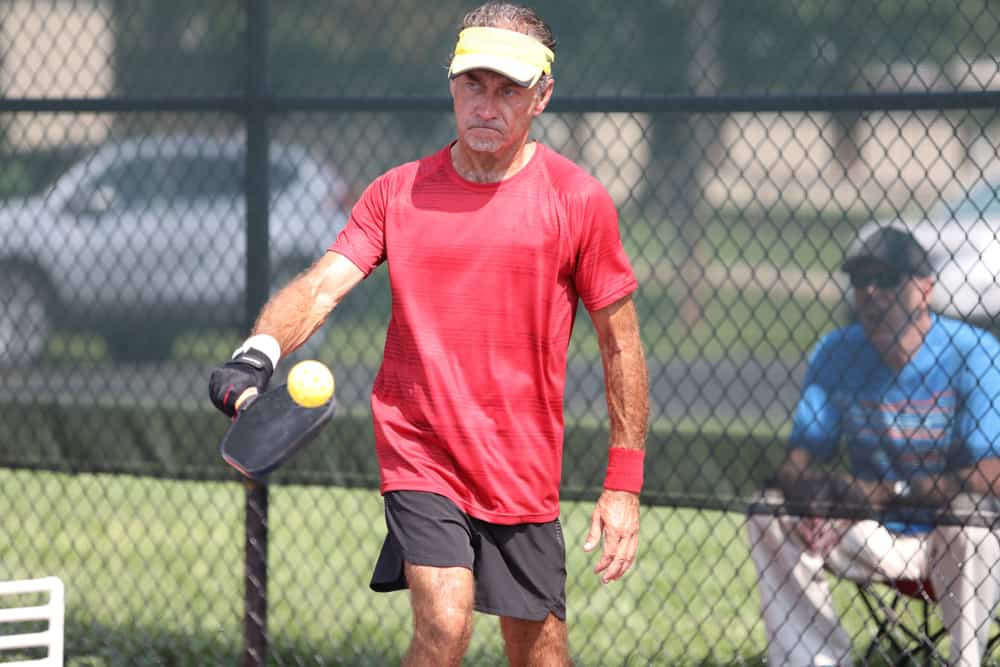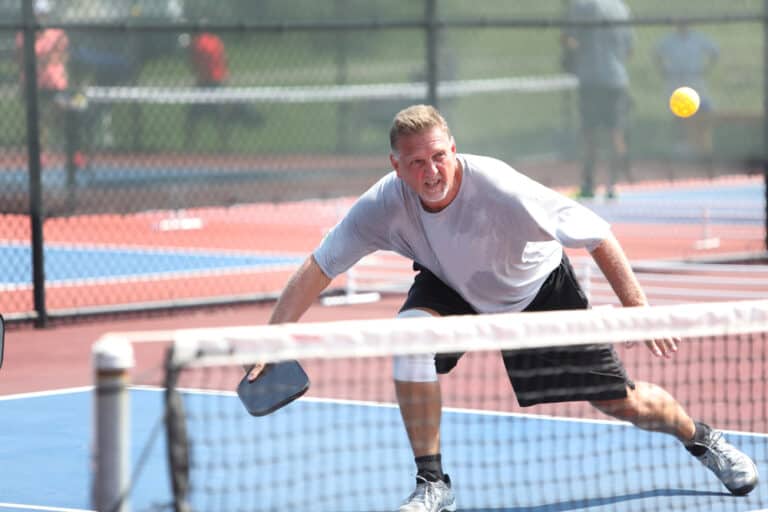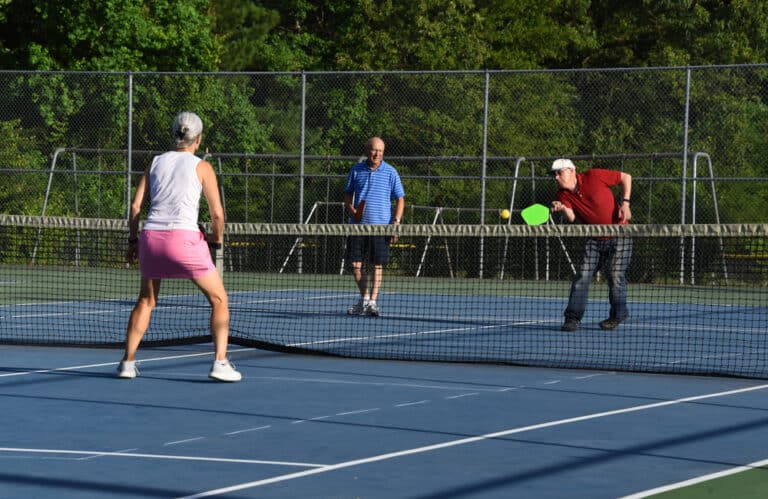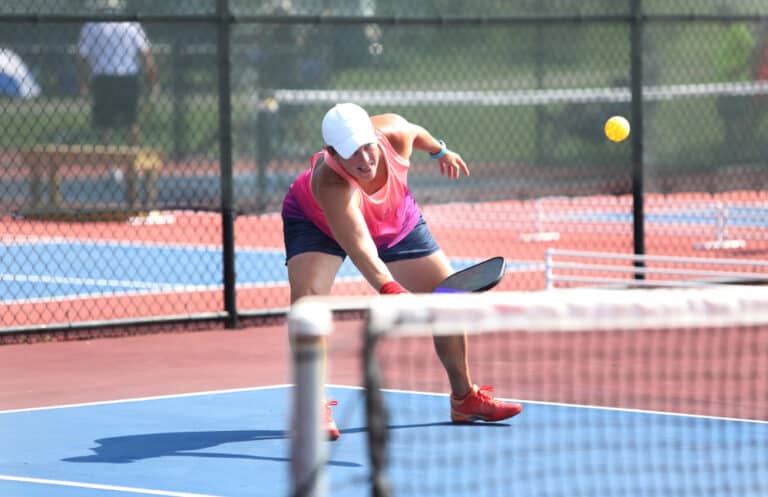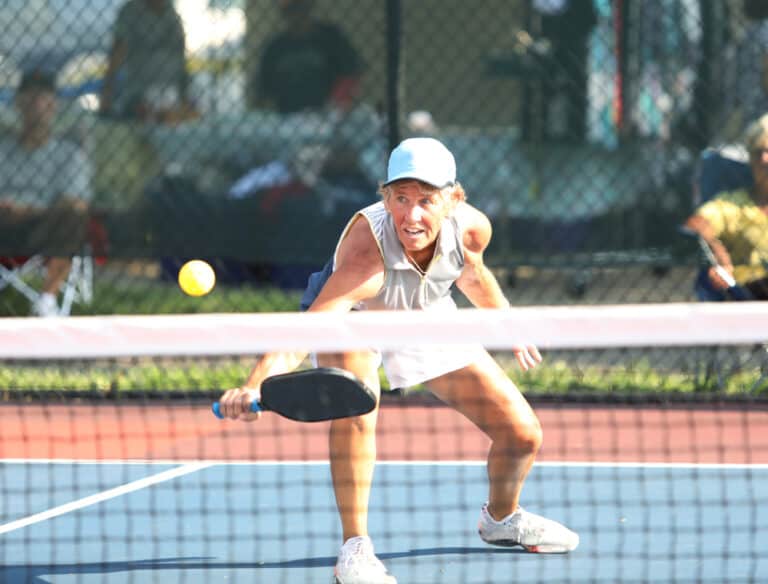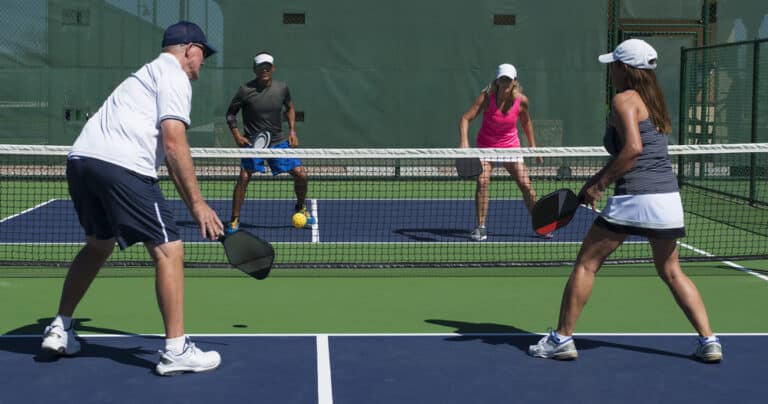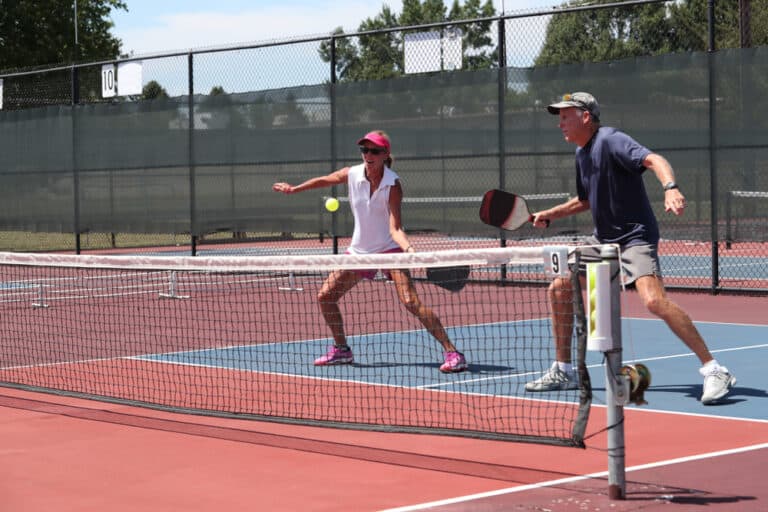Can You Double Tap In Pickleball?
Every so often during a game of pickleball, a player will double tap while hitting a shot. If players are unfamiliar with the rules, they may wonder whether this is legal. Pickleball has a detailed list of rules that allow the game to be played fairly. So, can you double tap in pickleball?
A player can double tap while playing pickleball, but specific criteria must be met to ensure the double tap is legal. The hit must be unintentional, continuous, with a single direction stroke, and by one player. If these criteria are not met, the offending player will be penalized.
Double taps occur during pickleball games, and understanding whether they are legal mainly depends on how well you know the game’s rules. Double taps happen occasionally and are considered legal if specific criteria are met. These will be expanded upon in this post.
Is A Double Tap Legal In Pickleball?
Many pickleball players often wonder what happens if a player double taps. A double tap is when one or more players make contact with the ball twice during one shot.
Given that pickleball is a game involving a small ball and four people, a double tap can happen in many different ways, as will be outlined below. Although there are many variations the double tap can take, the rules of pickleball are clear as to what is considered legal in this regard.
Like all sports, pickleball has rules that govern the game, and it is helpful for players to be familiar with the rules when they play to respond accordingly.
The rules of pickleball allow for a player to double tap only if it is unintentional, is a continuous stroke, is made in a single direction, and is made by just one player. Double taps are permitted on serve as well as during a rally.
This is among a handful of commonly misunderstood rules for the game of pickleball. If a player violates this or any other rule, they would have committed a fault and would automatically lose the rally.
For it to have been unintentional means it cannot be the result of a deliberate strategy by a player to hit the ball twice to gain some advantage. Sometimes a player hits the ball and can assume from the shot that it might head in the wrong direction or not make it over the net.
A player is not permitted to intervene and hit the ball for a second time to get the desired outcome. This action would be considered illegal, and the player would be penalized and lose the rally.
The strike would be continuous if the two contacts between the ball and the paddle were consecutive and within quick succession, with no break in between. This must form part of one striking action, not two separate strikes.
The third criterion a double tap must adhere to to be considered legal is that it must be a stroke made in a single direction. This means that the strike cannot make the ball go in one direction, and then, due to the double tap, it moves in a different direction.
The last criterion is that only one player can perform it. If more than one player participates in the double tap, it is automatically considered a fault, and the players will be penalized.
Suppose the double tap does not meet these criteria, for example. In that case, if the double tap is intentional, not continuous, in multiple directions, or struck by more than one player, it will result in a fault, and the player hitting the pickleball will lose the rally.
If the serving team commits the double tap, the resulting fault will be a loss of serve.
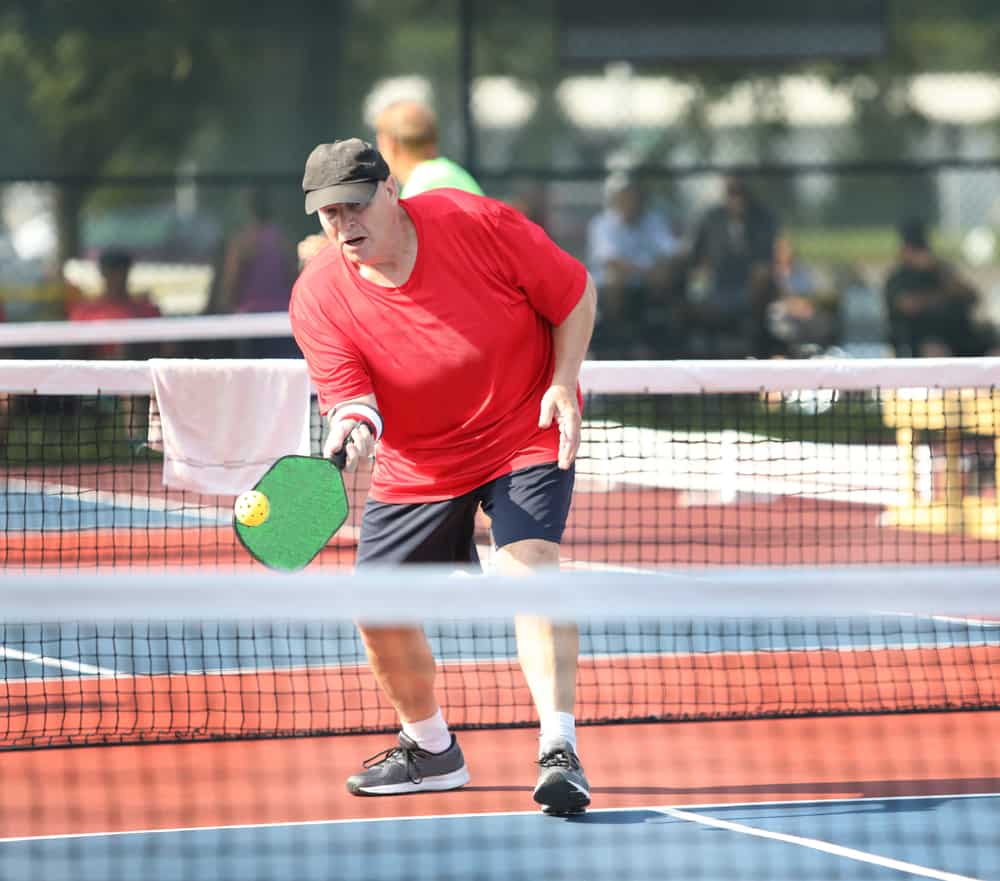
How Can A Double Tap Happen In Pickleball?
There are various scenarios in which a double tap can occur. For example, a player might attempt to hit a groundstroke that accidentally results in the ball being struck twice by the paddle.
This might happen if the ball comes at the player quicker than anticipated or if the player slightly mistimes their shot, and it bounces against the paddle twice.
Another scenario is if a player tries to volley the ball and, in reaching for the ball with arm outstretched, accidentally causes the pickleball to bounce twice against the paddle in quick succession.
Additionally, if a player mistimes a shot or fails to connect the paddle with the ball on first contact, the ball may hit a player’s hand and then hit their paddle, causing the contact to happen twice in one shot, albeit in quick succession.
This can also happen if the ball strikes the paddle once, and then as the player moves the paddle, it hits against the paddle for a second time in quick succession while the paddle is in a continuous motion.
Another scenario is if a player accidentally deflects the ball off their paddle and then hits it again to get the ball back in the desired direction, or allows a teammate to hit it. A teammate might see that the ball is not going in the right direction and steps in to hit it back on course.
Additionally, a double tap can happen if one player hits the ball, and seeing that it is falling short of the net, a teammate hits it for a second time.
These are examples of when and how a double tap can occur, but there are surely other ways not listed here. Sport, by its nature, can include unexpected moments, which is why rules are so important to keep the game on track.
This rule only applies to a double tap and not to a carry.
Conclusion
The rules of pickleball are extremely specific about what qualifies as a legal double tap and what will be penalized. It is helpful to get familiar with the rules of the game to be able to respond appropriately.
The rules help to ensure that no team receives an unfair advantage over the other by hitting the ball twice and helps to ensure the game is fun and fair for all players.

